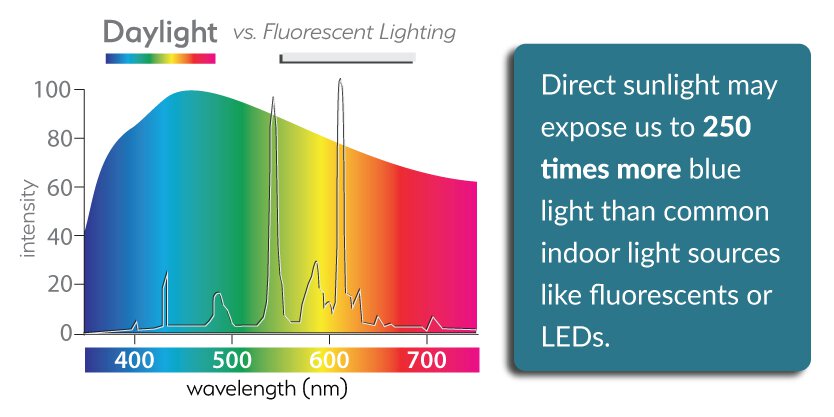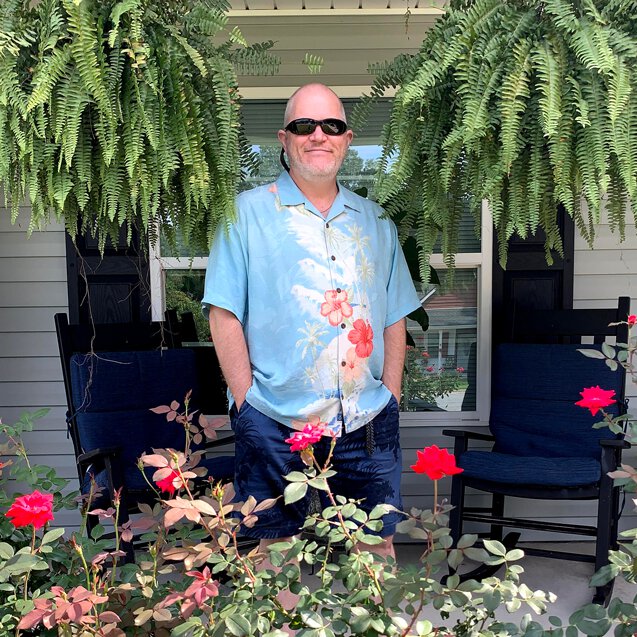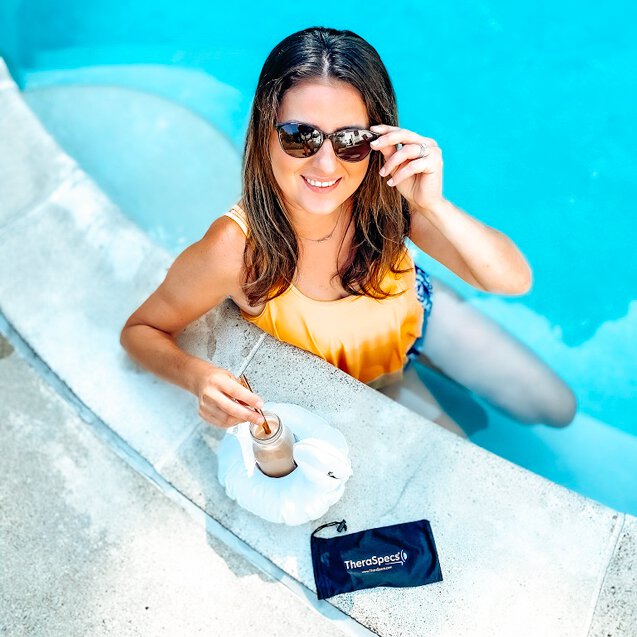Do Sunglasses Help with Outdoor Blue Light Protection? A Comparison of Top Brands
Blue light is everywhere, but we usually only hear of its health concerns when it has to do with our screens. It may surprise you then to hear that blue light is massively more abundant in natural sunlight, which may also increase the risk for healthy and light-sensitive eyes (and brains). We not only explain why it is important to filter blue light from the sun, but we compare the biggest sunglasses brands in several critical areas.
Why Blocking Outdoor Blue Light Matters
The first question is whether you even need to worry about blue light when you’re outside. After all, the “threat” posed by blue light is normally contextualized around our constant exposure to computer screens and mobile devices, not necessarily natural light.

It’s hard to estimate exactly how much more blue light comes from natural sources because it will vary by the specific conditions (e.g. direct vs indirect light; clear vs cloudy day; time of day), but nonetheless it may increase our exposure by a factor of 250 when compared with common indoor lighting!1 And these spikes in blue light from the sun are consistent across all wavelengths.
Certain wavelengths are more important than others
There continues to be a lack of consensus on exactly how and in what ways blue light affects our health, and it can be at best controversial to declare that all blue light is bad. Instead, it is better to explain that specific outcomes depend on the wavelengths that reach our eyes and affect our brains.
Studies are inconsistent and experts are unclear on the complications associated with the highest energy blue light (400-440nm); there is evidence that it may lead to eye problems later in life, but more dedicated research is needed to determine this.
Many of us, even with healthy eyes and brains, report symptoms like eye strain and non-migraine headaches from screen use too. These devices generally emit blue light starting at 450nm and higher, which is also represented in significantly higher doses in natural sunlight, so it may play a factor in the onset of these issues while outdoors. Still, while researchers do not dispute these experiences, the exact cause(s) remains elusive.
There is much greater clarity around the negative effects of blue light near 480nm. Not only is this the wavelength to which our eyes are most sensitive, but this band of light also triggers neurological disorders like migraine.2 This means that even small concentrations—let alone the huge percentages emanating from sunlight—can bring about symptoms for these conditions, such as: headaches, migraine attacks, photophobia, vestibular dysfunction (dizziness, vertigo), and more.

These particular wavelengths in the blue spectrum are plentiful in natural daylight. In fact, f.luxometer data shows that a typical sunny day (at 10am) yields the most 480nm blue light when compared with other times and at exponentially greater quantities than device screens too. Moreover, at that hour, no other wavelength of blue light between 400-500nm is as prominent AND the lighting is also at its most intense. This matters because people with photophobia have repeatedly been shown to have a lower tolerance for bright lighting, furthering the risk they might be triggered by sources that the rest of us might consider normal. Basically this all adds up to a perfect storm for people who are extra sensitive to sunlight and to that portion of blue light.
So what does this all mean? The combination of extreme brightness and large doses of blue light (particularly at 480nm) can harm even healthy people, but it poses a distinct threat to those with light sensitivity and photophobia. As a result, they probably need enhanced protection in their dark sunglasses to block these wavelengths.
Blue Light Protection from Different Sunglasses
It’s important to start with a (hopefully) obvious premise: not all sunglasses offer the same protection. Some are darker and use polarization to reduce glare, some use a tint to offer therapeutic benefits while others only use colored or reflective lenses without adding additional light filtering properties.
It is probably fair to say that most typical and higher quality sunglasses will block some amount of blue light, especially if the lenses are dark and polarized. Even so, differing brands offer variable amounts of light filtration in the blue spectrum.
|
Percentage of blue light removed at critical wavelengths (nm) |
|||||||
| 450nm | 460nm | 470nm | 480nm | 490nm | 500nm | Total light removed | |
| TheraSpecs (Outdoor)3 | 92% | 92% | 91% | 92% | 92% | 92% | 90% |
| Oakley® Sunglasses4 | 88% | 88% | 88% | 88% | 87% | 87% | 89% |
| Ray-Ban® Polarized Grey4 | 91% | 90% | 89% | 88% | 88% | 88% | 88% |
| Maui Jim® Neutral Grey4 | 92% | 92% | 90% | 87% | 84% | 86% | 89% |
| Other FL-41 (Outdoor)3 | 83% | 84% | 85% | 86% | 86% | 87% | 85% |
While it’s clear that any of these sunglasses options present strong blue light filtering and dimming the overall brightness of any light source, it also shows that TheraSpecs outdoor lenses perform better than each of these prominent eyewear brands at the most critical wavelengths. Even other FL-41 products do not match the properties of TheraSpecs sunglasses, making TheraSpecs the best sunglasses for light sensitivity that you can find on the market. And that extra amount of protection can make all the difference when you are sensitive to light and/or have a condition like migraine or post-concussion syndrome.
Like many other popular sunglasses, TheraSpecs sunglasses also feature polarized lenses and 100% UVA/UVB blocking. Polarization helps eliminate reflective glare and increases the darkness of the lenses, while maximum UVA/UVB protection cuts down on non-visible ultraviolet light that can harm our eyes. Both of these characteristics enhance the comfort a person experiences under bright conditions outdoors.
What you have to remember is that these differences are compared among the top rated sunglasses available today, and TheraSpecs still surpass them in terms of protection—while also often reflecting a fraction of the cost for premium frames, polarization and UVA/UVB filtering. For example, outdoor TheraSpecs range from $129-$179 while brands like Maui Jim go from $170-$480.
You may also be considering less expensive options too. While cheaper alternatives may feel better for the wallet, you are unlikely to find them more appealing for your eyes. And chances are these will not come standard with polarized lenses and will perform noticeably worse in blue light filtering at those critical wavelengths too. In fact, here’s how people with photophobia and light sensitivity describe their experiences with TheraSpecs:









